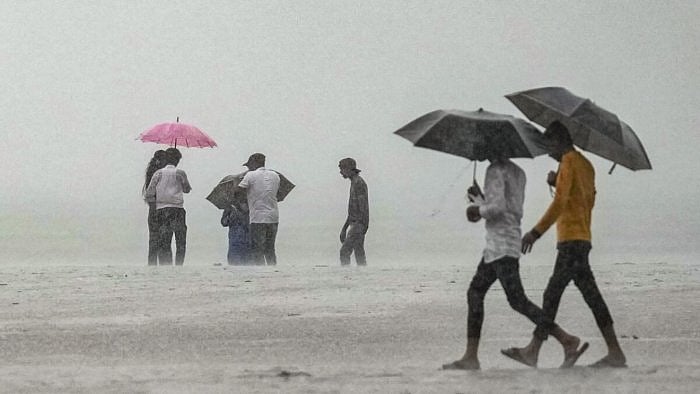
The monsoon revived in September due to other climatic factors like the Indian Ocean Dipole – a temperature sea-saw between the Arabian Sea and Bay of Bengal – and Madden Julian Oscillation, an ocean storm that began on the African east coast and travels across the equatorial Indian Ocean in every 30-60 days.
Credit: PTI Photo
India has escaped the adverse consequences of El Nino in 2023 with the monsoon season ending with more than 94 per cent of rainfall, making it one of the rare years when the four-month long spell ended up in good rainfall despite the threat from the Pacific Ocean.
The worst impact of the El Nino – an unusual warming of the Pacific that plays havoc with the weather systems around the world – was seen in August that experienced a record-breaking 36 per cent deficiency and a break period that continued for three weeks.
With a shortfall of 34 per cent and 27.5 per cent respectively, Kerala and South Interior Karnataka are among the seven meteorological subdivisions that received deficient rainfall. Others are: East UP (29 per cent), Bihar (23 per cent) Jharkhand (26 per cent), Gangetic West Bengal (23 per cent) and Nagaland, Manipur, Mizoram and Tripura (27 per cent).
“This year the negativity caused by the El Nino was minimal. A positive Indian Ocean Dipole helped in good rainfall in September. The season ended with overall rainfall staying closer to the lower side of the normal value,” said Mrutyunjay Mohapatra, director general at the India Meteorological Department.
El Nino is generally associated with a weak summer monsoon in India, though it is not a one-to-one relation. In 1997 the monsoon was normal despite being an El Nino year.
The monsoon revived in September due to other climatic factors like the Indian Ocean Dipole – a temperature sea-saw between the Arabian Sea and Bay of Bengal – and Madden Julian Oscillation, an ocean storm that began on the African east coast and travels across the equatorial Indian Ocean in every 30-60 days.
The four-month-long monsoon season ended with the country recording a 5.6 per cent shortfall even though the deficiency was much more for the east and north west (18.5 per cent) and southern peninsula (8 per cent). The rainfall barely slipped into the positive side for north west India (0.9 per cent) and central India (0.4 per cent).
The IMD chief on Saturday predicted a normal north-east monsoon that showers five meteorological subdivisions in south India – Tamil Nadu, Coastal Andhra Pradesh, Rayalaseema, Kerala and South Interior Karnataka – between October and December.
According to the national weather bureau’s forecast, the winter monsoon rainfall will be anywhere between 88-112 per cent of the long period average of just above 334 mm.
The south-west monsoon arrived a week late on the Kerala coast in June, which ended with 9 per cent deficiency. This was made up in July resulting in 13 per cent surplus followed by a disastrous August with an unprecedented 36 per cent deficiency. September ended in 13 per cent excess rainfall, thanks to a late surge resulting in an overall shortfall of 5.6 per cent.
Mohapatra said the El Nino conditions would continue at least up to March 2024 and one of the consequences could be above normal temperature and less intense cold wave in north west India.
The south west monsoon has begun withdrawing from north west India from September 15 and the process is expected to be finished by October 15. But the western coast and coastal Odisha and Andhra Pradesh are likely to experience intense rainfall in the next two days due to two separate low pressure systems developed over the sea.
